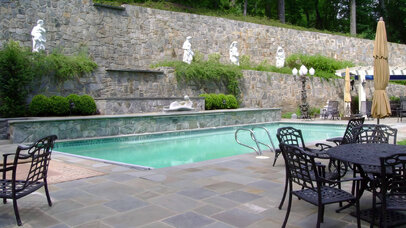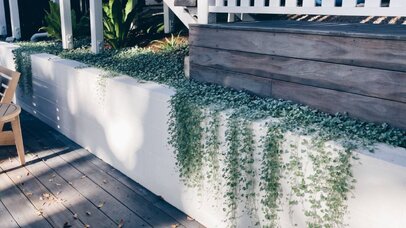Building a backyard pool is a serious commitment. Not only does it require a sizable financial investment, but you want your pool to stand the test of time for many seasons of family fun. This is where retaining walls come in.
These specialised structures are key in keeping your pool area secure from the natural elements. By preventing erosion and cave-ins, retaining walls ensure your pool maintains its beautiful shape for years to come.
This article will give you the lowdown on all things pool retaining walls. Learn what materials they’re made from, how to install them properly and other factors to consider. Whether starting a new pool project or refreshing an existing one, understanding retaining walls is a must.
We’ll break down everything you need to know so your pool area stays in tip-top shape. Following our guide means you can relax and be safe, knowing that your pool investment is well protected. So read on for easy-to-digest tips to retain the integrity of your backyard oasis. With the right retaining walls, you’ll enjoy splash-filled seasons for many summers ahead!
Common Materials for Pool Retaining Walls
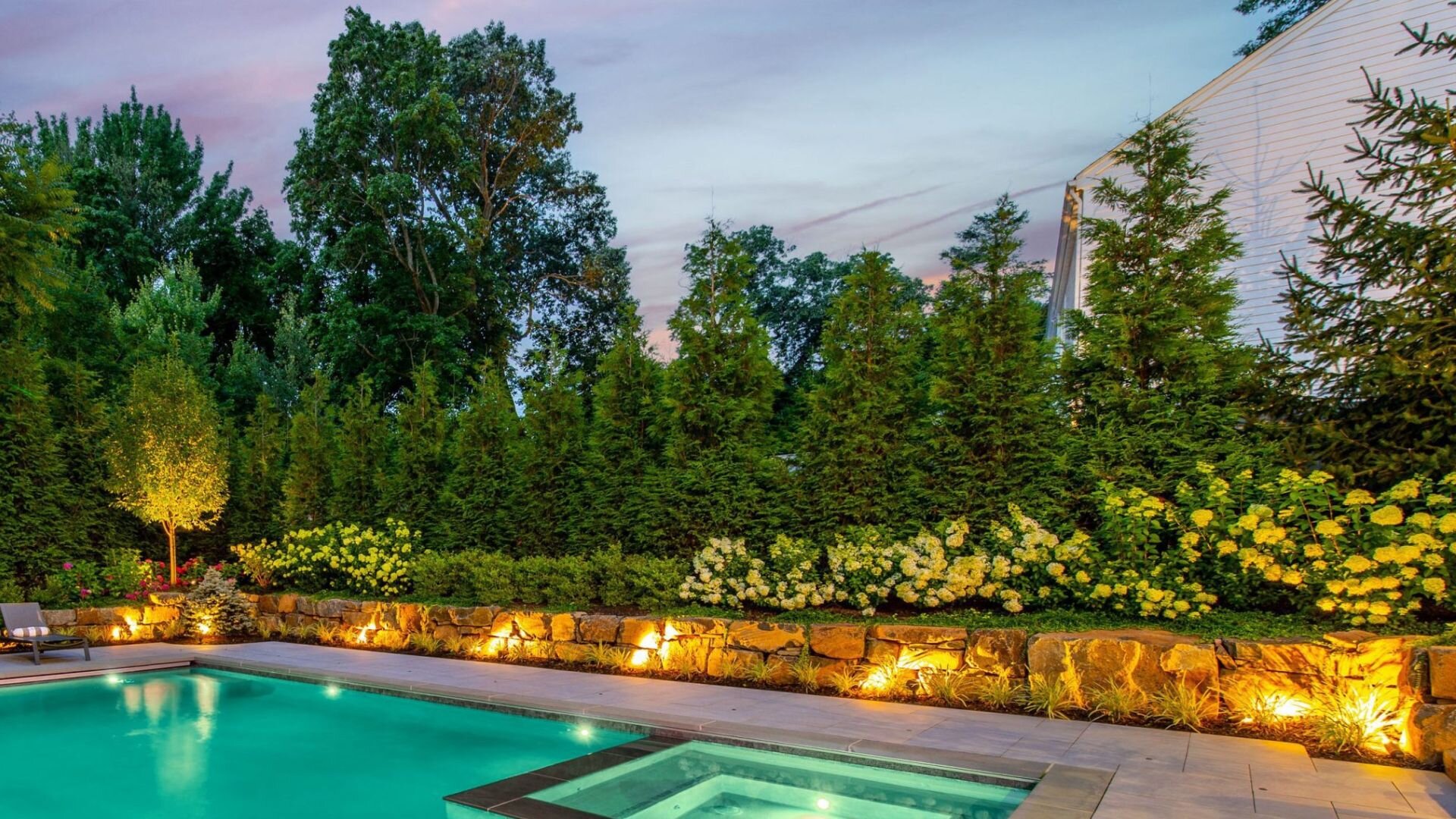
Concrete
Strengths
Concrete is extremely durable and reliable. It can support heavy soil and structural loads, providing a service life spanning decades.
Installation Methods
Concrete retaining walls are either poured onsite by mixing concrete mixtures or assembled from precast concrete panels or blocks.
Considerations
Formwork is required, and careful placement must occur during pouring. A curing time is also needed before the wall can bear heavy loads.
Concrete Landscape Blocks
Drainage Benefits
The spaces between interlocking blocks allow for water percolation, preventing soil saturation and erosion risks.
Easy Assembly
Segmental walls are assembled without heavy lifting equipment, suitable for DIY installation or contractor placement.
Aesthetic Variety
A large selection of colours, textures and edge styles provide design flexibility.
Natural Stone
Beauty & Strength
Natural stone is often a highlight of a traditional pool design that withstands weathering with low upkeep.
Challenges
The heavy material requires a robust substructure for support and skilled masons for proper stone selection and bonding.
Pressure-treated Wood
Lightweight Alternative
Pressure-treated wood is easier to handle during construction than concrete or stone, reducing complexity.
Lifespan Limitations
Additional protective coatings or facings are required as wood is more vulnerable to warping, cracking or decay over time.
Other factors like local building codes, cost, and appearance should be considered when selecting pool retaining wall materials. Concrete, landscape blocks, natural stone, and pressure-treated wood are go-to options for durable, low-maintenance pool walls.
Proper Installation of a Retaining Wall
Correct construction ensures the wall can withstand soil pressure over time. The installation process begins by excavating the area around the planned wall location. A compacted gravel base is then laid down as the foundation.
Reinforcing rebar embedded in concrete footings anchors the base securely into the underlying soil. With this strong substructure, the retaining wall structure can be erected according to design plans. Manufacturer’s instructions must be followed carefully for interlocking block walls.
Drainage is another critical aspect. Gravel and perforated piping behind the wall allow excess water to flow away. This prevents soil saturation and erosion issues.
Backfill soil is placed and thoroughly compacted in thin layers as construction progresses. The final height is aligned with the surrounding pool walls and deck area.
Inspecting materials and compaction techniques at each stage ensures engineering integrity. Following industry principles throughout guarantees a retaining wall that can withstand seasons of soil pressure with stability and function intact. This prudent installation results in a retaining wall built to last.
Retaining Wall Height Requirements in NSW
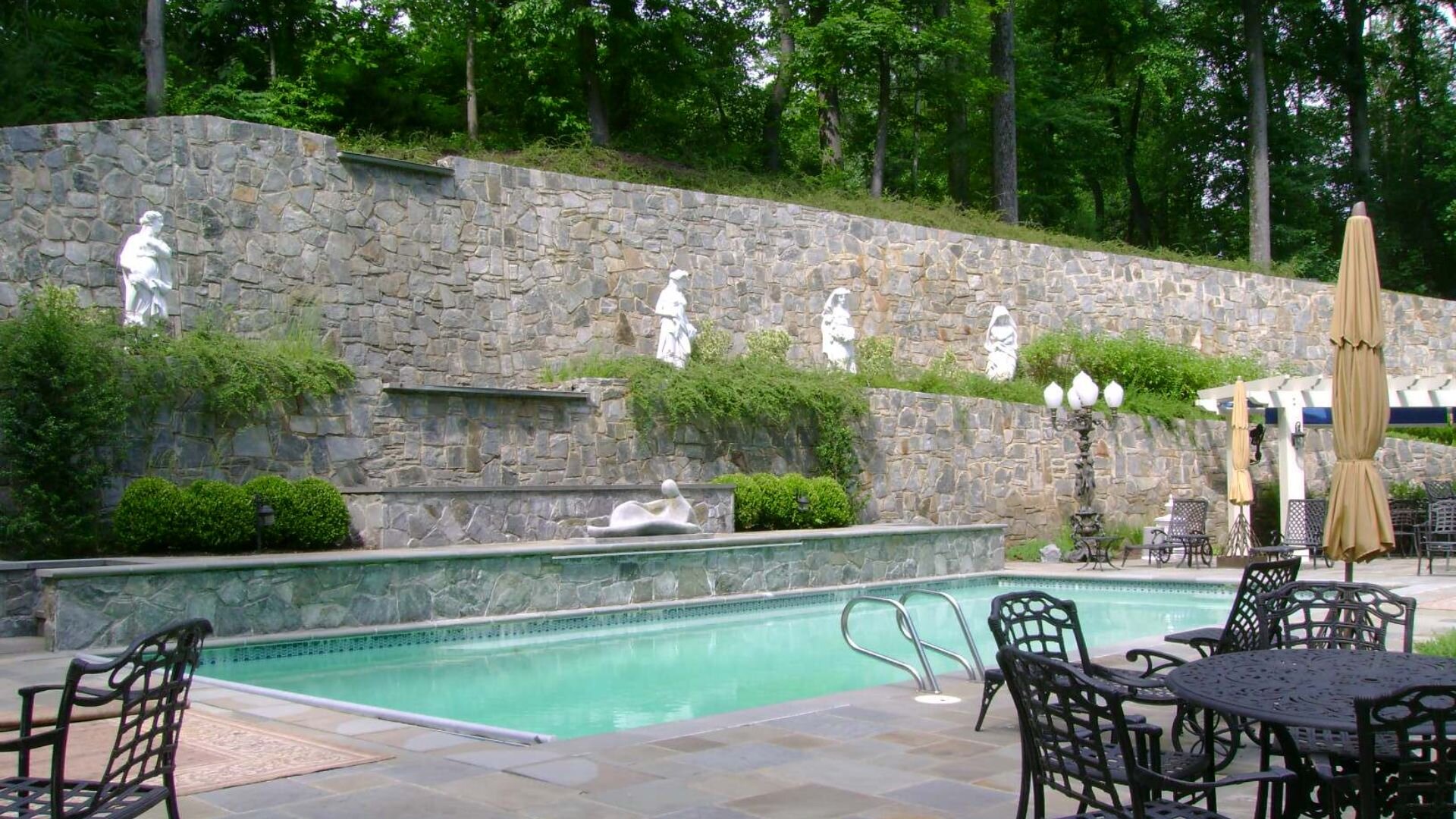
In NSW, retaining wall regulations depend on the total height of the wall. For walls under 1 meter, no approval is required. Depending on the local council, walls between 1 and 1.5 meters may not need a construction certificate. However, drainage and structural integrity must still meet engineering standards.
All retaining walls over 1.5 meters high require approval and a certified structural engineer’s plan. The design must include suitable footings and drainage to prevent flooding or subsidence.
For walls higher than 3 meters, additional design considerations come into play. There are also specific guidelines for retaining pool water:
- Retaining walls cannot reduce the effective pool fence height to less than 1.8 meters.
- A minimum 500mm setback is required between the wall and fence to maintain clearance.
- Pool barrier fences must remain separate structural elements from any retaining walls.
Property owners are advised to consult their local planning office for rules on walls over 1.5m. A permit and certified plans will ensure NSW pool safety standards and building codes are followed.
Drainage Requirements
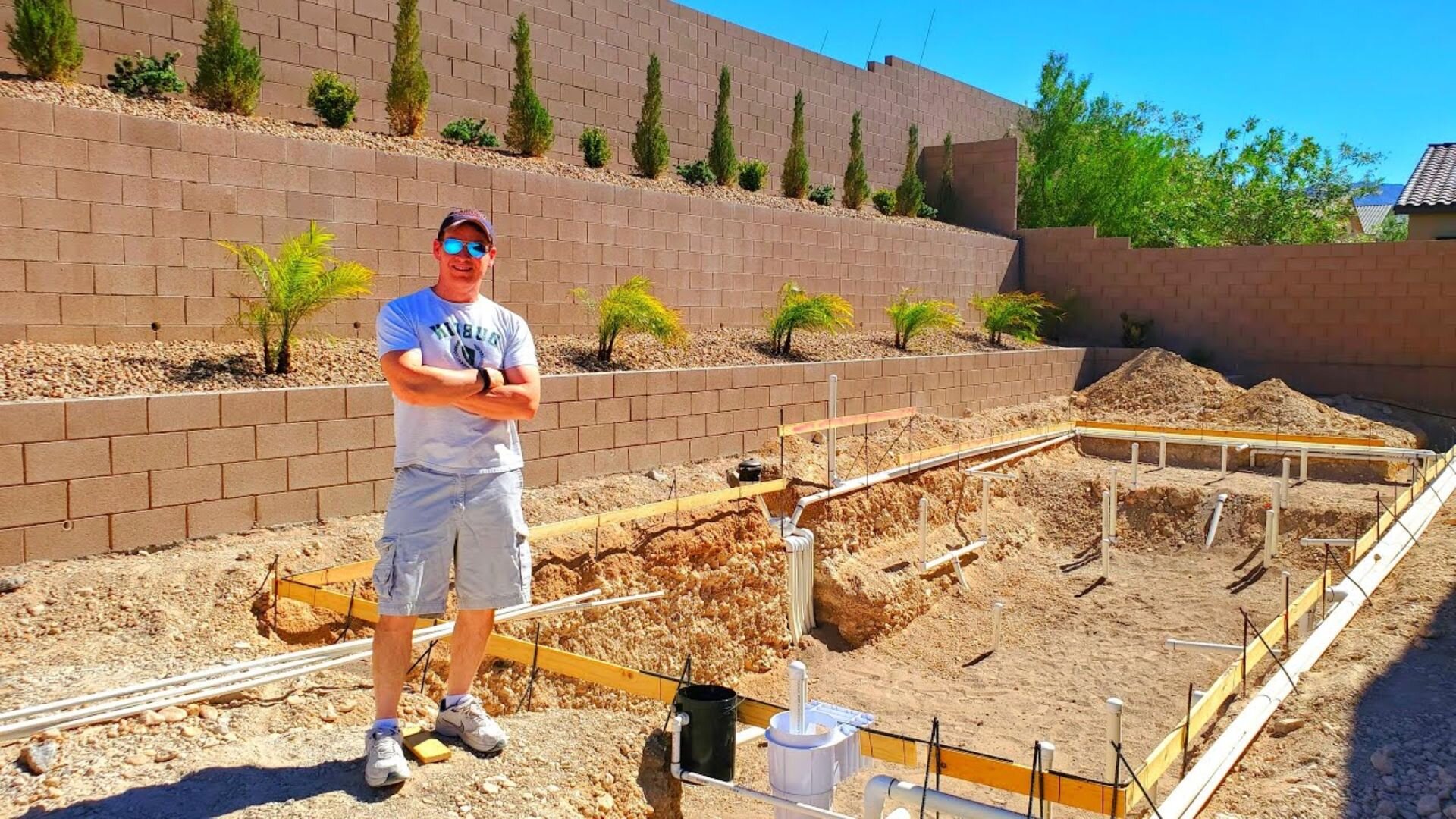
Drainage is vital to prevent excess pressure, erosion and structural compromise. Several elements work together to remove water effectively.
Drainage Materials
Granular fill like gravel is commonly used as it has high permeability. Geotextile fabric wraps the filling to prevent soil migration. Perforated corrugated pipes or weeping tiles provide pathways for water to exit.
Within the Wall
Weep holes at the base and behind the face allow trapped water to escape. Holes should be provided approximately every 3 feet with geotextile behind to prevent soil washing.
Behind the Wall
A retention bed of free-draining granular material like gravel lies behind the wall. Perforated pipes in the bed convey water to appropriate discharge areas.
On the Pool Side
Approved sump pumps and surface drains route incidental water off the wall area. Gutters and downspouts also divert any irrigation or rainfall.
Site Grading & Codes
The area must slope away and not allow ponding against the wall. Conformance with local drainage and floodplain bylaws is mandatory.
Regular Maintenance and Inspection
Maintaining retaining walls is important to maximise their lifespan and protect investments. Homeowners should regularly inspect for signs of problems. A thorough visual check is recommended twice yearly in spring and fall for any cracks, bulges, settlement or other issues both above and below ground. During inspections, drainage functionality is also assessed. Weep holes and drainage pipes are cleaned yearly to prevent sediment build-up that could impede water flow.
Other maintenance tasks include vegetation control and irrigation monitoring. Any trees or bushes within 5 feet of the wall must be trimmed to avoid root damage, compromising integrity over time.
Sprinklers are checked to ensure they do not saturate soil behind the wall and add excess moisture pressure. Concrete walls especially require sealing or repainting every 3 to 5 years, depending on weather exposure, to maintain protection from external elements.
Professional inspections every five years provide a more in-depth evaluation of the retaining wall structure below visible surfaces. Engineers can identify minor issues early before they develop into costly repairs.
Catching small problems promptly through diligent home maintenance and commercial assessments helps safeguard the retaining wall investment. It allows the important structural barrier to perform its role in supporting the landscape for decades to come before requiring any renovations. Regular upkeep is key to maximising the lifespan of retaining walls.
Get The Lowdown On Keeping Your Pool In Place With Retaining Walls
Properly installing and maintaining pool retaining walls is critical for keeping your pool securely in place for years of enjoyment. By understanding what materials to use, how to install them correctly, the drainage required, and the regular upkeep needed, you can feel confident your pool’s retaining wall will withstand the elements.
For even more guidance on pool retaining walls or any other pool service need, contact the experts at The Pool Co. Our experienced team has provided quality pool construction and maintenance in Sydney for many years. We’re happy to answer retaining wall questions and ensure your pool has the strongest support system.
Give us a call or visit our website today to learn more about our retaining wall services and products. With The Pool Co, you can trust your pool is in good hands.

